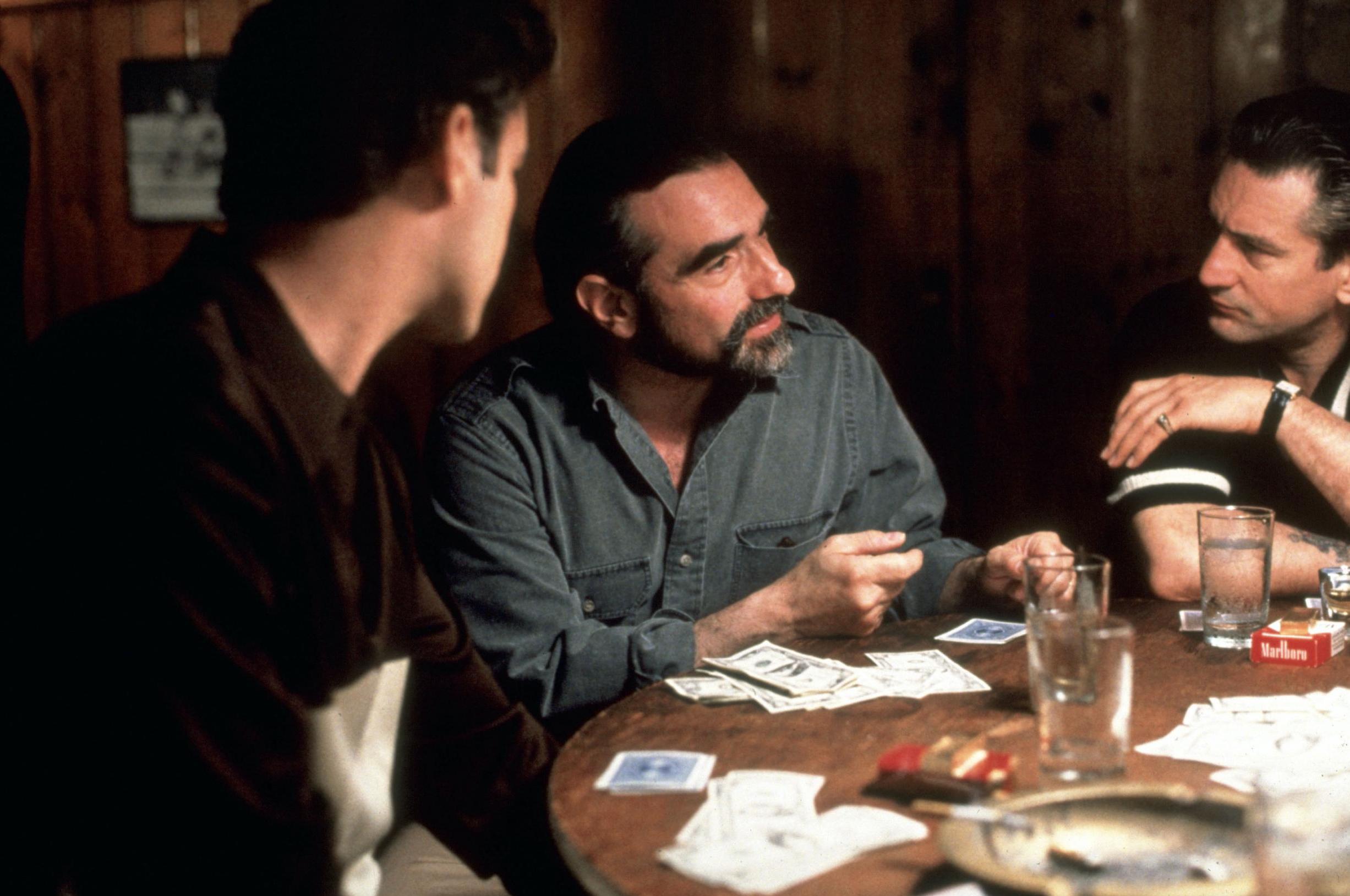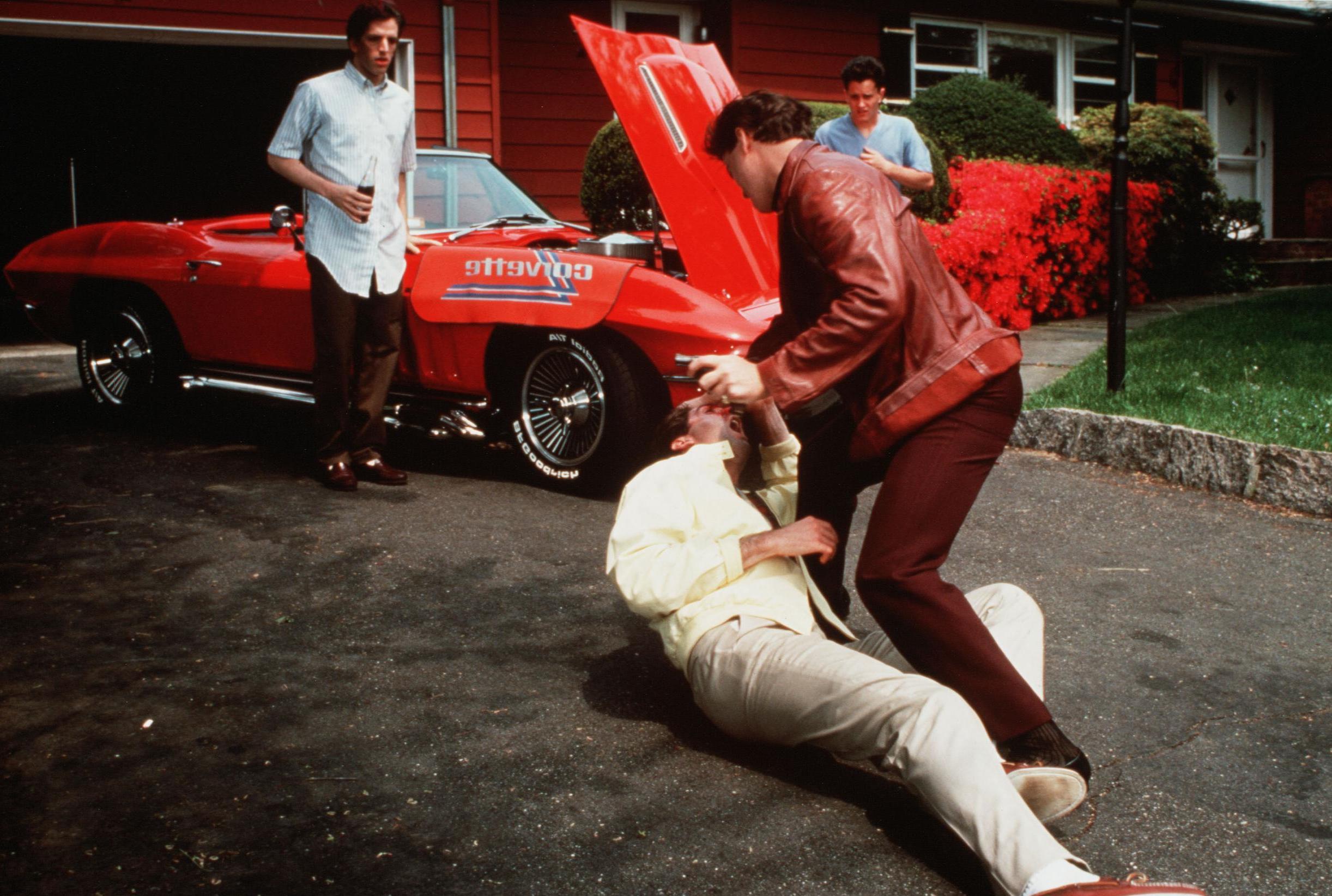Goodfellas at 30: Does it stand the test of time?
The restored 30th-anniversary version of Martin Scorsese’s film which is back in British cinemas and will be screened at the 77th Venice international film festival next month still casts its immense spell, says Geoffrey Macnab

When Martin Scorsese’s Goodfellas was released in cinemas 30 years ago, the verdict was unanimous: this was an instant, cast-iron classic. Scorsese was immediately credited with reinvigorating the gangster film, a genre that had been flogged nearly to death over the previous 80 or so years, since DW Griffith’s The Musketeers of Pig Alley (1912).
In the 1970s and 1980s, the era of The Godfather and Once Upon a Time in America, gangster films had become increasingly self-conscious, often turning into epic, sombre, decades-spanning sagas in which the heroes had a tragic grandeur. In Goodfellas, by contrast, the watchword was exuberance. Instead of a brooding, mumbling, and introspective don played by Marlon Brando, the film gives us Joe Pesci’s lowlife, Tommy DeVito. He’s a diabolical, hyperactive, and pint-sized psychopath who seems to have escaped from some nearby Looney Tunes cartoon. Instead of Al Pacino as a young, Hamlet-like outsider, reluctantly joining the family business, it has Ray Liotta as Henry Hill, the wise guy on the make, who thinks he is the “luckiest kid in the world” to be working for the mob.
Scorsese didn’t skimp on the violence. The film’s famous opening scene – in which Liotta’s character looks on as Pesci’s Tommy and Robert De Niro’s James “Jimmy” Conway stab and shoot a man to death who has been making noise in the trunk of their car – sets the tone for what follows. There are corpses in garbage skips and meat freezers. Characters are “whacked” in ever more grotesque ways.
However, the director later said he wanted Goodfellas to be “a rollicking road movie in a way – like a kind of Bob Hope and Bing Crosby picture – with everybody on the road and having a great time”.
This week, Goodfellas is back in British cinemas in a restored 30th-anniversary version. With few new Hollywood blockbusters on the horizon because of the Covid-19 crisis, cinema owners hope some viewers will pay to see Scorsese’s film on a big screen. It has also been chosen for the 77th Venice International Film Festival next month and for the sister event, Il Cinema Ritrovato festival in Bologna, in late August. The ripple effect from Goodfellas is still being felt. Last week, it was announced that Nicholas Pileggi, the crime journalist and author of Wiseguy, the book on which the film is based, is collaborating with Terence Winter, the creator of Boardwalk Empire and one of the main writers on The Sopranos, on yet another mob drama. As reported in the trade press, it’s about “organised crime seen through the eyes of the mafia’s first family”.
So how does Goodfellas stand up today? Seen in a dingy, near empty, recently reopened north London cinema on a weekday August afternoon, it still casts its immense spell. This is Scorsese at the peak of his powers, a movie that also shows the sometimes anguished Italian-American at his most playful and adventurous. He is using all sorts of storytelling tricks: freeze frames, winks at the camera, flashbacks, flash-forwards, scenes set to music, and an ingenious voice over.

In truth, the storytelling here is sometimes on the choppy side. The film starts with a killing, lurches back in time, and proceeds in very episodic fashion through the random series of murders and heists that make up the characters’ lives. Then it accelerates wildly in the final reel towards its denouement. Whenever matters threaten to grind to a halt, there will be a brilliant set-piece involving De Niro or Pesci. The film takes its relentless tempo from the jukebox-like selection of songs on the soundtrack, such as Tony Bennett, Muddy Waters, Aretha Franklin, and the Rolling Stones. Sid Vicious strikes a suitably strident note over the end credits.
“As far back as I can remember, I always wanted to be a gangster,” Henry tells us early on in that famously evocative voiceover. “Being a gangster was better than being president of the United States.” He is played as a young teenager by Christopher Serrone but Liotta is still the narrator.
Goodfellas is a look at mob life from the inside. Scorsese described it as “a staged documentary”.
Henry guides us through his world as if he is an anthropologist telling us about a strange, lawless tribe found in the outer reaches of Brooklyn. He pays as much attention to what the mobsters eat and drink, and to how they spend their leisure time, as he does to the traditional heists and shoot-outs. Most of the men are obese. Whenever they get out of a car, it will spring upward a few inches.
An inordinate amount of screen time is devoted to the wise guys’ wardrobes. Henry’s newfound status as a teenage hoodlum isn’t signalled by any particular feats of violence or larceny he performs but by brogues.
In one famous shot, Henry is shown walking through a nightclub, introducing all the over-dressed mobsters who hang out there. This rogue’s gallery includes Frankie Carbone, Fat Andy, Frankie the Wop, Eddie No Nose, Pete the Killer, and Jimmy Two-Times. They nod or glance at the camera. They’re like the colourful petty criminals found in old Damon Runyon stories. Henry is part of this ghoulish, tight-knit crew but he is only half Italian. That gives him the ability to step outside and analyse the mob’s eccentric and excessive behaviour.
At the moments of the most extreme violence, Scorsese continually cuts away to close-ups of Henry’s face. He loves his life as a wise guy, relishing the money, the sex, and the camaraderie, but unlike the Pesci or De Niro characters, he retains a conscience. He also knows that if everyone else around him is being bumped off, his turn is bound to come along soon too.
One very noticeable difference between Goodfellas and Scorsese’s recent, Netflix-backed epic The Irishman, is that in the earlier film Scorsese gives meaningful screen time to the main female character, Karen Hill (Lorraine Bracco). Whereas Anna Paquin was hardly heard at all in her role as Peggy Sheeran in The Irishman, Bracco’s Karen is a prominent figure. She shares the voice-over with Henry. This allows viewers to look into the macho mobster world from the perspective of the wives and girlfriends. Karen expresses the same bewildered fascination about the rituals and behaviour of the women in the group as Henry does about the men. She can’t help but notice their cheap, gaudy clothes, bad skin and garish make-up. She isn’t a passive figure either. When Henry cheats on her, she will hold a gun to his face or try to humiliate him in front of the prison wardens.
Another important female figure is Catherine Scorsese, the director’s mother, who gives a scene-stealing performance as Pesci’s character’s doting, silver-haired mum. He may be an unhinged killer but he is still the apple of her eye. She’ll fuss over him, cook lavish meals in the middle of the night for him and his friends, and lend him the kitchen knife without asking what he intends to do with it.
It’s no coincidence that Goodfellas was being made at the same time that The Simpsons began airing as a series in late 1989. Scorsese’s film has the same vivid and comic characterisation that runs through Matt Groening’s long-running cartoon sitcom. Goodfellas scenes such as the hilarious “Morrie’s wig commercial” in which the wig shop owner Morrie Kessler (Chuck Low) shows off his hurricane-proof wigs that will never embarrass their owners or slip off at the wrong time, could come straight from Springfield, the fictional town in which The Simpsons is set.
It is instructive to watch the 2006 documentary The Real Goodfella Henry Hill which features Hill, his brother, the law enforcement officials who turned him into an informant, as well as Scorsese and Pileggi. The documentary largely corroborates Scorsese’s film. Most of the events shown in Goodfellas happened. Hill and his motley crew really did steal several million dollars from a Lufthansa vault. All those vicious mob slayings actually did take place in front of Henry’s eyes.
When Goodfellas was released, some viewers were upset not just by the violence but by the inordinate amount of swearing. “F*** and its derivatives are used 321 times an average of 2.04 a minute,” the production notes for the remastered special edition of Goodfellas reveal. “At the time of the film’s release, it had the most profanity of any movie in history.”
When you see the real Hill on screen, you realise the swearing in Goodfellas is, if anything, understated. Hill uses an expletive in almost every sentence. He can’t complete the simplest anecdote without garnishing it with one or two “f***s”. He is garrulous and has a certain, seedy charm. However, he is nothing like the lithe and charismatic Liotta.

From the earliest days in which they were made, gangster movies have been accused of glamorising their subjects. In Goodfellas, Scorsese is guilty as charged. His bright and breezy, if admittedly blood-spattered film, is so fast-moving and so full of ironic humour that it fails to acknowledge the full squalor and terror of Hill’s life. The avuncular patriarch Paulie (Paul Sorvino), who treats Henry like a son and is shown using his razor in prison to chop garlic for the tomato sauce, was, in reality, a cold-eyed psychopath – “one of the most frightening people I’ve ever been around”, as one lawyer calls him. Paulie used to beat up barmaids with baseball bats. Jimmy “the Gent”, the character played with such roguish charm by De Niro, was likewise a delinquent and thug, a “homicidal maniac” as Hill later described him. “The film kind of softened him up,” Scorsese acknowledged. The murderous Pesci character was apparently – if it is possible – even more vicious in real life than on screen.
Goodfellas sidesteps both the darkness and the paradox at the heart of Hill’s story. He became a gangster because he didn’t want to be an “ordinary nobody” like his perennially cash-strapped electrician father or his browbeaten neighbours. In his book, Pileggi argues that Hill was the ultimate wiseguy because “out of the entire crew he alone managed to survive”. He did so, though, by betraying his friends and then entering the witness protection programme. The price he paid was that he then had to live in hiding. His identity was erased. Until Pileggi and Scorsese came looking for him to tell his story, he was even more of a nobody than his father. He couldn’t even hold on to his own name.
In an interview with the late film historian and journalist Richard Schickel, Scorsese explained what attracted him to Goodfellas. Pileggi’s book seemed to him to be taking readers “through purgatory and hell in the underworld, like Virgil or like Dante”. Brando warned him not to do yet another gangster film. Scorsese was initially inclined to agree but the venerable British director Michael Powell, who was married to his editor Thelma Schoonmaker, told him he had to make it. She read the script, and told him it was “wonderful” and “funny”. Thankfully, Scorsese took Powell’s advice.
Goodfellas still stands as its director’s most exhilarating film. Watching it, though, as the body count mounts, you may still get that queasy, uncomfortable feeling that you shouldn’t be enjoying it as much as you are.
‘Goodfellas’ will be screened at the 77th Venice International Film Festival from 2-12 September. It is showing currently in selected UK cinemas
Join our commenting forum
Join thought-provoking conversations, follow other Independent readers and see their replies
Comments